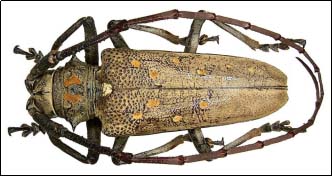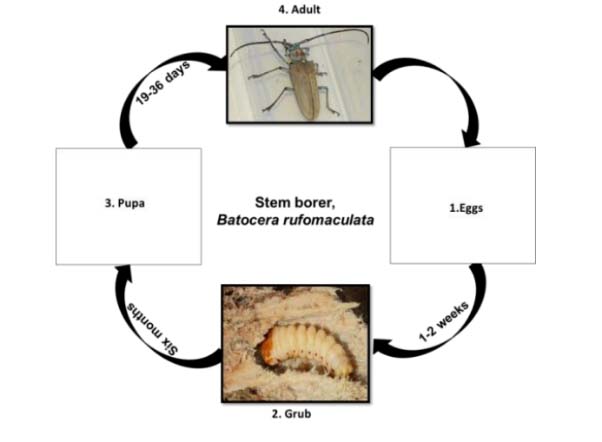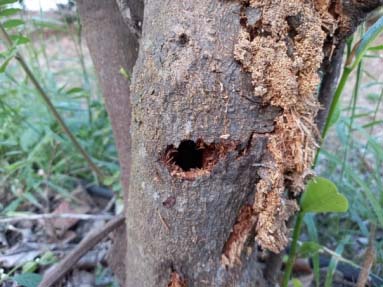What is Stem Borer?
It is an annual insect having one generation in a year. As per the name, larvae feeds on the stem boring hole in it.
Scientific name – Batocera rufomaculata

Life Cycle-
Egg: The female cuts the tree bark and lays about 200 eggs singly into these cuts. Egg is brownish white in colour with narrowly rounded ends.
Larva: On hatching, the larva feeds on sapwood of the tunnel. The larvae tunnel through the sapwood and because of their size, they make large tunnel which interfere with sap flow and affect foliage and fruit production.
Adult: The adult beetle emerges by a short tunnel running to the exterior and ending in a circular exit-hole. The maximum life recorded for the adult is eight months.

How does Stem Borer damage?
- The larvae bore tunnels inside the sapwood of tree and trunk and start feeding on the sap.
- Frass (excreta) comes out from several points and sometimes sap oozes out of the holes.
- The larvae tunnel through the sapwood which interfere with sap flow and affect foliage and fruit production.
The damage resulted in yellowing of branches followed by drying and die back of terminal shoots and branches ultimately leading to the death of whole tree.

How to manage Stem Borer?
| Cultural Method | Chemical Control |
| Maintaining cleanliness in the orchard is the thumb rule for any pest and disease infestation.Control is necessary during all the life cycle stages but the best control time is when eggs are hatching, and caterpillars are small.A piece of wire inserted into the bored hole to kill the caterpillar inside can be quite effective in small orchards or when the infestation is low. | Injecting Chloropyriphos 50% + Cypermethrin 5% EC @ 2ml/litre in the hole has also been reported to be effective. Always seal the hole after any treatment with cotton of mud. |
References-








